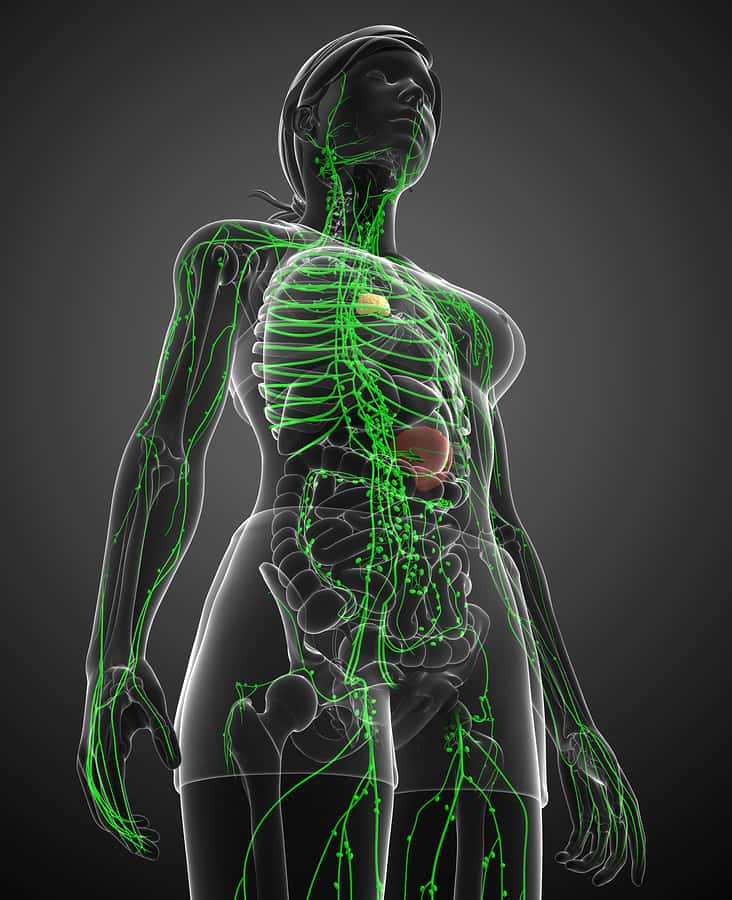
To understand lymphoedema, it’s first helpful to understand the body system that it effects. What is the lymph system?
The lymphatic system is probably most simply described as our body’s ‘sewerage system’. It maintains fluid levels in our body tissues by removing all fluids that leak out of our blood vessels.

The lymphatic system is important for the optimal functioning of our general and specific immune responses. The lymph nodes (which are most easily felt in the neck and groin) monitor the lymph flowing into them and produce cells and antibodies which protect our body from infection and disease. You may have noticed swelling in these nodes when you are unwell.
When the lymphatic system has been damaged by surgery, radiotherapy or other tissue damage, swelling of a part of the body may occur. If this swelling persists for more than three months it is known as lymphoedema. The swelling is casued by an accumulation of excessive amounts of protein-rich fluid. While lymphoedema most commonly occurs in the arms and legs, it can occur in other regions.
Lymphoedema can gradually appear, and may present initially as transient swelling of a limb or other region of the body. Other symptoms may include aching, heaviness, stiffness, limitation of movement, tightness or temperature changes. People with lyphoedema may find that clothing, jewellery or shoes may feel tighter. While lymphoedema is not usually a painful condition, some people report pain and pressure in the affected region.
Lymphoedema cannot be cured but early diagnosis and appropriate management ensures the best possible outcome to minimise the impact of lymphoedema on a patient’s function. Lymphoedema therapists accredited with the Australian Lymphoedma Assocaition (ALA) are able to provide the most effective treatment following Best Practice Guidelines.
Often sufferers of lymphoedema have experienced considerable trauma that may have caused the development of lyphoedema. Feel free to get in touch with our team to discuss the best approach for you. Or click here to read more about lymphoedema management and our service.